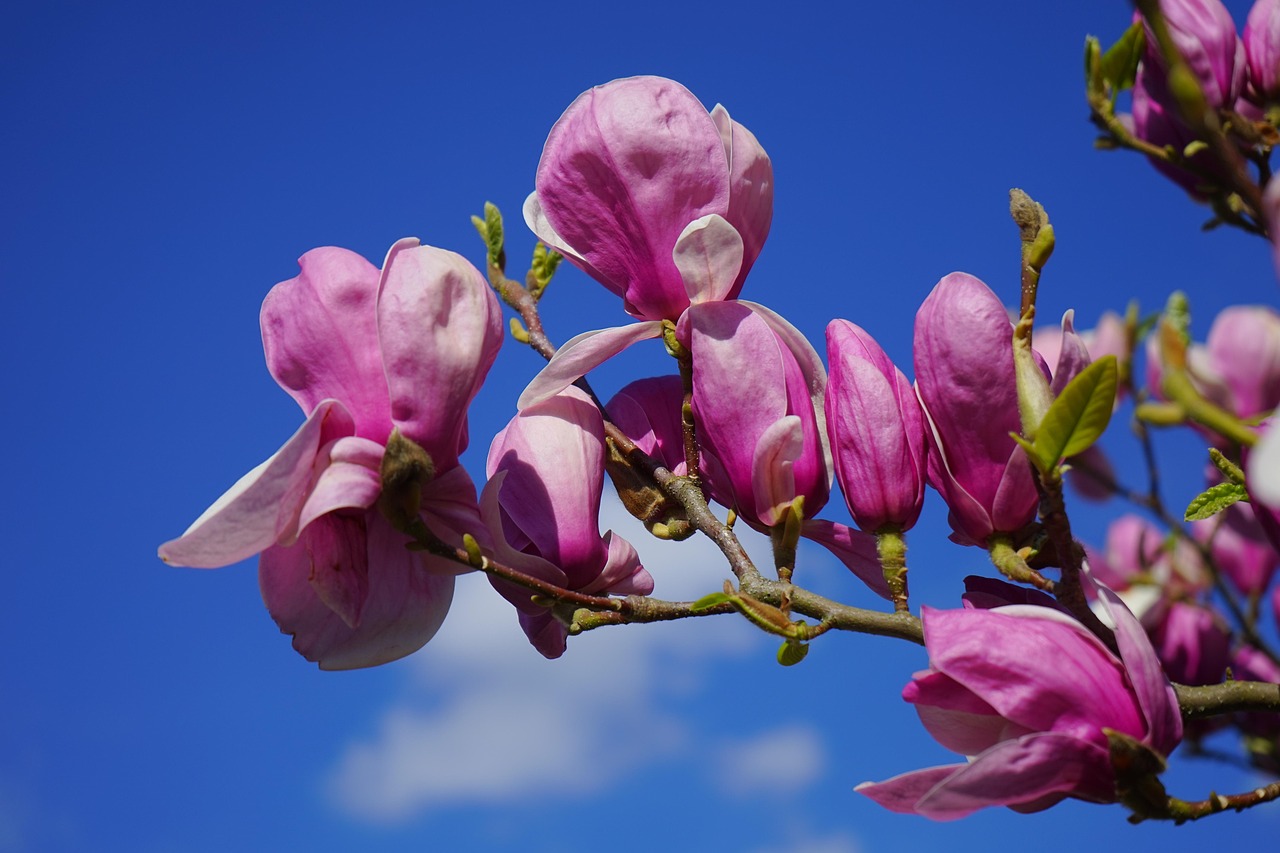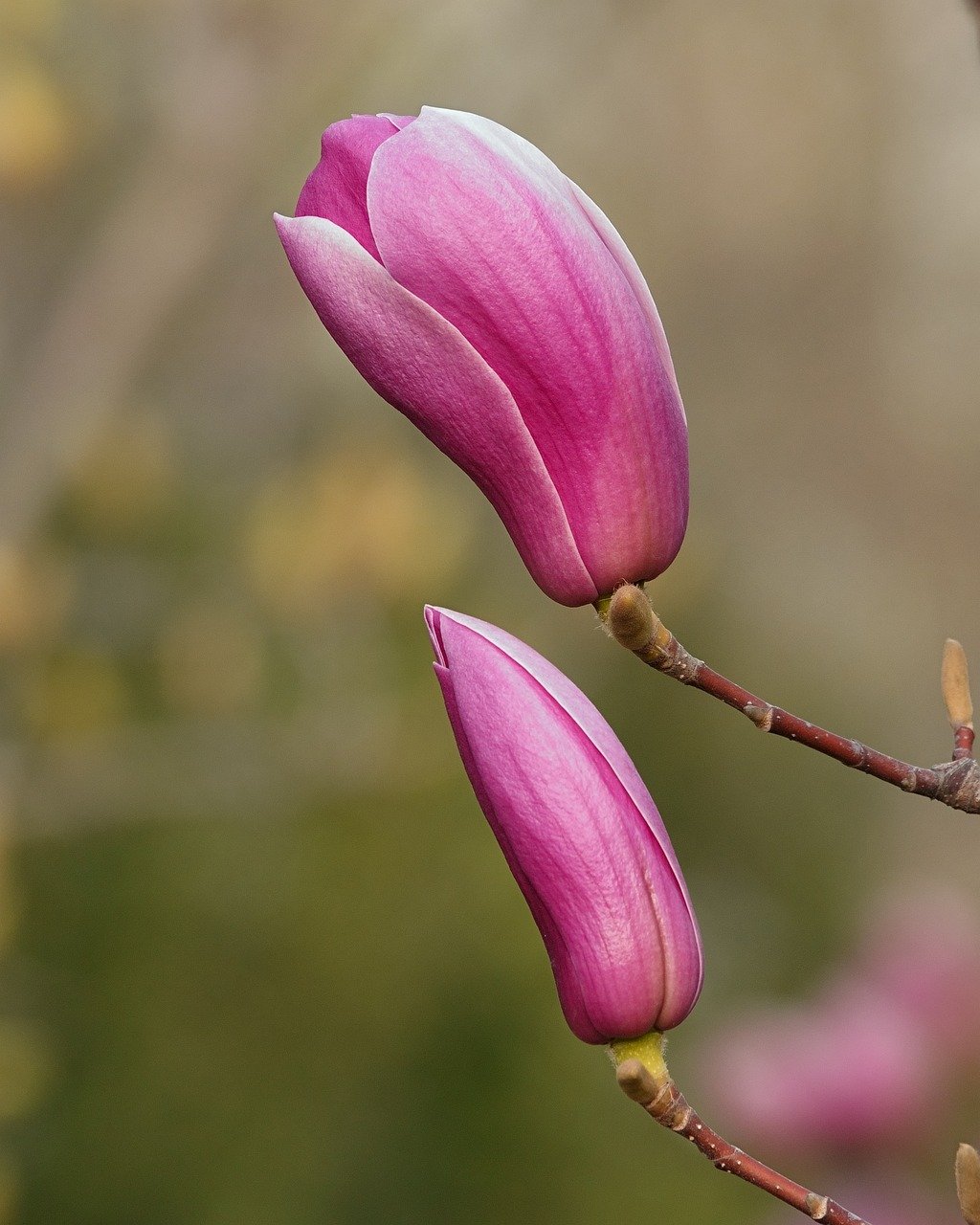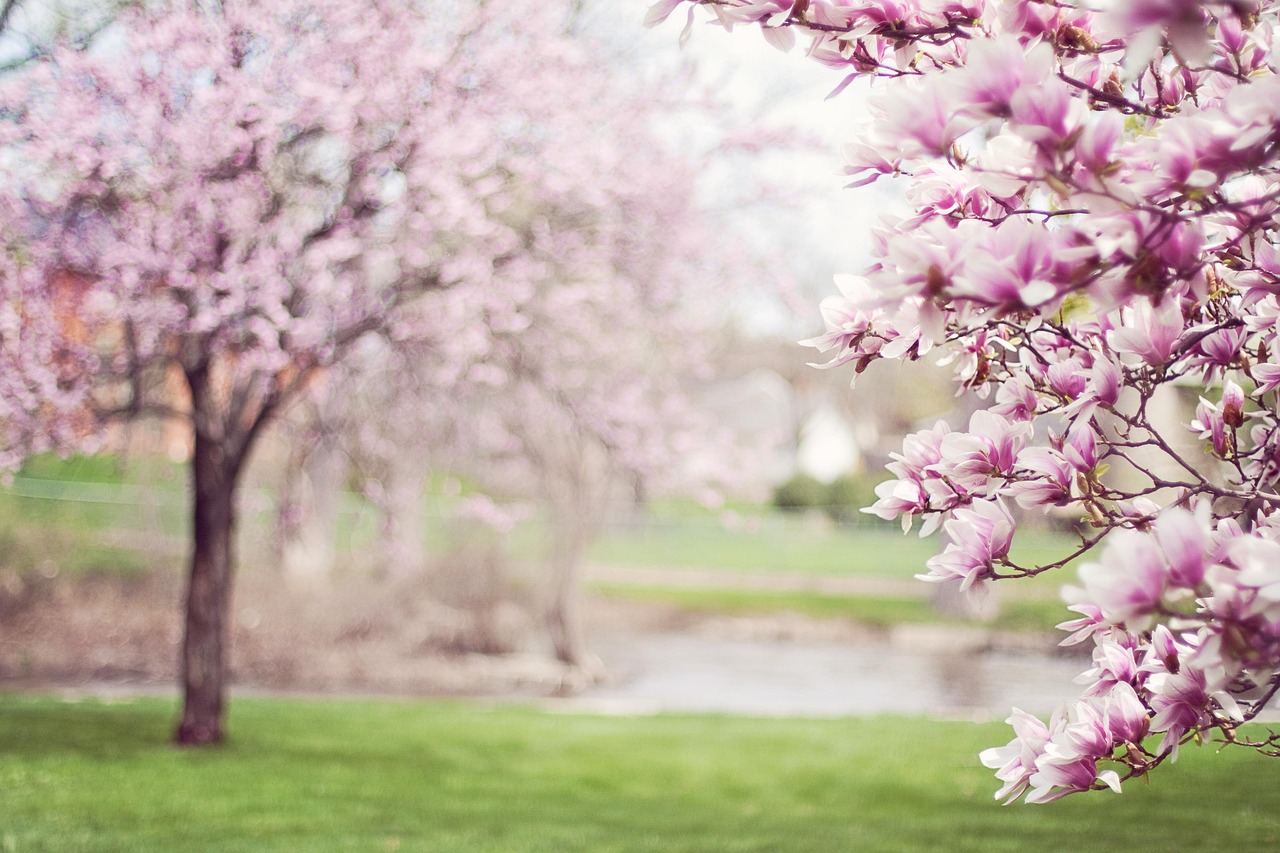Magnolia trees are celebrated for their stunning, fragrant blooms that herald the arrival of spring. To make the most of the season, consider plant care, optimal viewing times, and creative ways to enjoy their beauty. Planning ahead will enhance your experience of these magnificent trees.
Understanding Magnolia Trees
Magnolia trees belong to the Magnoliaceae family and are known for their beautiful, large flowers. They can be deciduous or evergreen, depending on the species. With over 200 varieties, these trees are popular for landscaping due to their striking appearance and pleasant fragrance. Blooming typically occurs in early spring, often before the leaves emerge, creating a breathtaking spectacle.

The flowers of the magnolia can vary in color and size. Common shades include white, pink, purple, and yellow. Each variety has its own unique characteristics, which can make selecting the perfect tree an enjoyable journey for gardening enthusiasts.
Types of Magnolia Trees
When considering magnolia trees, it is essential to understand the different types available. Here are some of the most popular varieties:
| Type | Description | Bloom Color |
|---|---|---|
| Southern Magnolia | A large evergreen tree known for its glossy leaves and fragrant white flowers. | White |
| Star Magnolia | A smaller deciduous tree with star-shaped white or pink flowers. | White/Pink |
| Saucer Magnolia | A hybrid magnolia featuring large, tulip-shaped flowers. | Pink/White |
| Japanese Magnolia | A smaller tree that produces striking cup-shaped flowers. | Purple/White |
Choosing the right type of magnolia can depend on your local climate, soil conditions, and personal preferences regarding flower color and size. Each variety brings its charm and can significantly enhance outdoor spaces.
Magnolia Blooming Season

The blooming season for magnolias varies by species and climate. In general, most magnolias bloom in early spring. The timing can be affected by temperature variations and local weather patterns. Here are some factors that influence blooming:
- Climate: Warmer climates may see earlier blooms compared to cooler regions.
- Species: Different species have varying bloom times; for example, Southern magnolias bloom later than Star magnolias.
- Weather Conditions: An unseasonably warm winter can lead to premature blooming.
The peak bloom time is often brief, lasting only a few weeks. This makes planning visits to parks or gardens featuring magnolia trees essential for experiencing their full splendor. Knowing when to expect blooms can enhance your appreciation of this seasonal event.
Caring for Magnolia Trees

Caring for magnolia trees involves understanding their specific needs to thrive. Proper care can lead to healthy trees with vibrant blossoms. Here are some key care tips:
- Location: Choose a spot with full sun to partial shade for optimal growth.
- Soil: Magnolias prefer well-drained, slightly acidic soil.
- Watering: Young trees need regular watering while establishing roots. Mature trees are more drought-tolerant.
- Pruning: Minimal pruning is necessary. Focus on removing dead or damaged branches after flowering.
By following these care tips, you can ensure that your magnolia trees remain healthy and continue to provide stunning blooms year after year. Engaging with these majestic trees during their blooming season will create lasting memories and enhance your landscape’s beauty.
Enjoying Magnolia Blooms
The blooming season of magnolia trees is not only a visual delight but also an opportunity for various activities. From garden parties to photography, magnolia blooms can enhance the experience of spring. Understanding how to engage with these magnificent trees can make the most of their season.
Photography Opportunities
Magnolia flowers present stunning photographic opportunities due to their vibrant colors and unique shapes. Here are some tips for capturing their beauty:
- Timing: Early morning or late afternoon light provides the best conditions for photography, offering soft illumination that highlights the flowers.
- Composition: Experiment with different angles. Shooting from below can emphasize the grandeur of the flowers against the sky.
- Focus: Use a shallow depth of field to create a beautiful blur in the background, allowing the magnolias to stand out.
Taking time to photograph magnolia trees can result in beautiful memories and striking images that capture the essence of spring.
Hosting Garden Parties
The beauty of magnolia blooms makes them an ideal backdrop for hosting garden parties. Consider these ideas to create an enjoyable atmosphere:
- Decor: Use magnolia flowers in centerpieces. Their large blooms can add elegance to tables.
- Seating: Arrange seating under the trees for shade and ambiance, allowing guests to enjoy the blooms up close.
- Activities: Plan activities such as flower arranging workshops where guests can create their own bouquets using fresh magnolia blooms.
Creating an inviting environment around magnolia trees can enhance social gatherings and create lasting memories with friends and family.
Magnolia Tree Symbolism and Cultural Significance
Magnolia trees carry various meanings across different cultures. Understanding their symbolism can deepen your appreciation for these beautiful trees. Here are some common associations:
- Purity and Nobility: The white magnolia is often associated with purity and nobility, making it a popular choice for weddings and other significant events.
- Endurance: The resilience of magnolia trees, which can thrive in diverse conditions, symbolizes endurance and strength in many cultures.
- Love and Femininity: In Chinese culture, magnolias represent love and femininity, often used in art and poetry to convey deep emotions.
Recognizing these meanings can add a layer of appreciation when enjoying the beauty of magnolias during their blooming season.
Environmental Benefits of Magnolia Trees
In addition to their aesthetic appeal, magnolia trees offer numerous environmental benefits. These advantages contribute positively to local ecosystems:
- Air Quality Improvement: Like many trees, magnolias help improve air quality by absorbing carbon dioxide and releasing oxygen.
- Biodiversity Support: Magnolias provide habitat and food for various wildlife species, including birds and insects.
- Erosion Control: The extensive root systems of magnolia trees help prevent soil erosion, particularly on slopes or near water bodies.
By planting and caring for magnolia trees, individuals can contribute positively to the environment while enjoying their beauty in bloom.

Conclusion: Planning Ahead for Magnolia Blooms
To truly appreciate the beauty of magnolia trees during their blooming season, planning ahead can be beneficial. Whether through photography, hosting events, or understanding their cultural significance, engaging with these trees can enrich your experience. Consider the practical aspects of care and enjoyment to fully embrace this seasonal spectacle.
Magnolia Trees in Landscaping
Magnolia trees are not only beautiful but also versatile in landscaping. Their unique form and stunning blooms make them a favorite for various settings, from residential gardens to public parks. Understanding how to incorporate magnolias into landscape design can enhance both aesthetic appeal and functionality.
Choosing the Right Location
When planning to plant a magnolia tree, selecting the right location is crucial for its growth and health. Here are some factors to consider:
- Sunlight: Magnolias thrive in full sun to partial shade. Ensure the chosen spot gets adequate sunlight throughout the day.
- Space: Consider the mature size of the tree. Plant it where it has enough space to grow without overcrowding other plants or structures.
- Soil Quality: Ensure that the soil is well-drained and slightly acidic, as magnolias do not perform well in overly compacted or alkaline soils.
By carefully selecting the planting location, you can help ensure your magnolia tree flourishes and contributes positively to your landscape.
Design Ideas for Incorporating Magnolias
There are several creative ways to include magnolia trees in your landscape design:
- Focal Points: Use magnolias as focal points in gardens, where their large flowers can draw attention and create visual interest.
- Entryways: Planting magnolias near entranceways can create an inviting atmosphere, welcoming visitors with their fragrance and beauty.
- Border Planting: Use smaller varieties of magnolia as border plants to define spaces within gardens or along pathways.
These design ideas can help showcase the beauty of magnolias while enhancing the overall appeal of your outdoor spaces.
Seasonal Care Tips for Magnolia Trees
Caring for magnolia trees throughout the seasons ensures they remain healthy and vibrant. Here are essential care tips tailored for each season:
Spring Care
As magnolias bloom in spring, focus on the following care practices:
- Mulching: Apply mulch around the base of the tree to retain moisture and suppress weeds.
- Watering: Ensure adequate watering, especially in dry spells, to support blooming and new growth.
- Pest Monitoring: Keep an eye out for pests such as aphids or scale insects that may affect the tree’s health.
Summer Care
During the summer months, maintain your magnolia’s health with these tips:
- Irrigation: For young trees, ensure consistent watering, especially during hot, dry periods.
- Fertilization: Apply a balanced fertilizer if growth appears stunted or if leaves show signs of nutrient deficiencies.
- Weeding: Regularly remove weeds around the base of the tree to reduce competition for nutrients.
Autumn Care
As temperatures cool, prepare your magnolia for winter with care practices such as:
- Pruning: Light pruning can help shape the tree and remove any dead or damaged branches before winter.
- Fall Cleanup: Rake fallen leaves and debris from around the tree to prevent disease.
- Watering: Continue to water during dry spells to ensure the tree is well-hydrated before winter dormancy.
wInter Care
During winter, magnolia trees require special attention due to cold weather conditions:
- Protection: Consider wrapping young trees with burlap to protect them from harsh winds and freezing temperatures.
- Icing Prevention: Avoid using salt or chemicals near the base of the tree, as they can harm its roots when snow melts.
- Pest Inspection: Check for overwintering pests that may need treatment before spring emerges.
Caring for magnolia trees through each season will promote healthy growth and beautiful blooms year after year. The effort put into seasonal care ensures that these magnificent trees continue to thrive and enhance outdoor spaces.
Exploring Magnolia Varieties for Your Garden
Magnolia trees come in a wide range of varieties, each offering unique characteristics that can suit different gardening preferences and environments. Understanding these varieties can help you choose the right type for your specific landscape needs. Here are some notable magnolia varieties to consider:
- Magnolia grandiflora: Known as the Southern Magnolia, this tree is famous for its large, fragrant white flowers and glossy evergreen leaves. It is well-suited for warmer climates.
- Magnolia stellata: Also known as Star Magnolia, this smaller tree produces stunning star-shaped white or pink flowers in early spring. It is ideal for smaller yards.
- Magnolia soulangeana: The Saucer Magnolia is a hybrid that features large, cup-shaped flowers that bloom in early spring. It is appreciated for its striking appearance and can tolerate a variety of soil conditions.
- Magnolia liliiflora: Known as the Lily Magnolia, it has tulip-shaped flowers that bloom in shades of purple and pink. This variety is often used in hybridization to create new magnolia types.
When selecting a magnolia variety, consider factors such as climate, available space, and desired aesthetics. Each variety brings its charm and can significantly enhance your garden’s beauty.
Engaging with Local Magnolia Events
Many communities host events celebrating the beauty of magnolia trees during their blooming season. Participating in these local events can provide a deeper appreciation for magnolias and connect you with fellow enthusiasts. Here are some types of events to look for:
- Garden Tours: Many botanical gardens and parks offer guided tours during peak blooming season, allowing visitors to enjoy magnolias and learn about their care.
- Festivals: Some regions hold festivals dedicated to magnolias, featuring art, food, and educational workshops centered around these beautiful trees.
- Photography Contests: Participate in local photography competitions that encourage capturing the essence of magnolias in bloom, showcasing your artistic talent while celebrating nature.
Attending these events can enrich your understanding of magnolias while fostering community connections around shared interests in nature and gardening.
Final Thoughts
Magnolia trees offer an incredible spectacle during their blooming season, captivating many with their stunning flowers and rich symbolism. From understanding the various types of magnolias to engaging in seasonal care practices, there are numerous ways to appreciate these magnificent trees fully. Whether you choose to plant them in your garden, visit local events, or simply enjoy their beauty in public spaces, magnolias provide a refreshing touch of nature’s elegance.
The care and attention given to these trees not only enhance their growth but also contribute positively to the environment and local ecosystems. By incorporating magnolias into your life, you celebrate the arrival of spring while enriching your surroundings.
As the season unfolds, take the time to immerse yourself in the beauty of magnolia blooms. Whether through photography, gatherings, or personal reflection under their boughs, magnolias are a reminder of nature’s splendor and resilience. Embrace this seasonal experience to create lasting memories and inspire future generations to appreciate the beauty that magnolia trees bring to our world.
